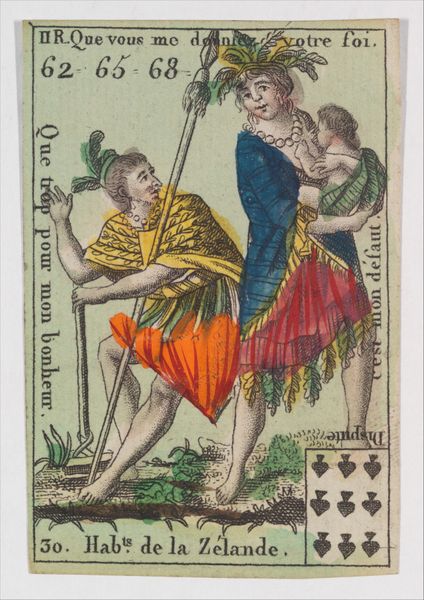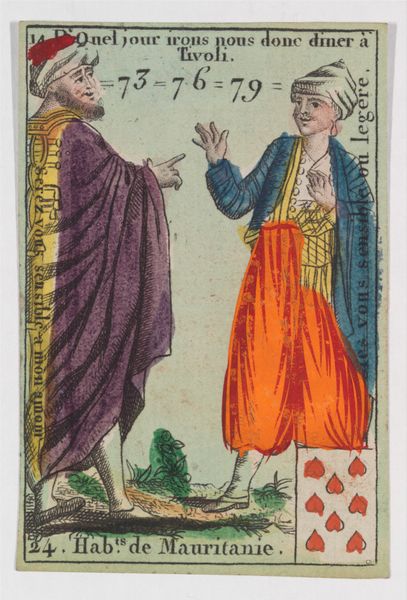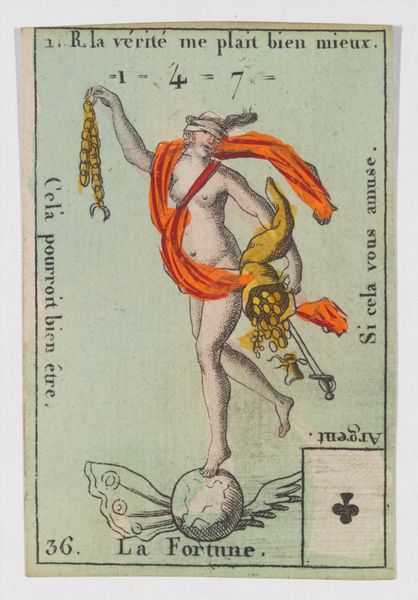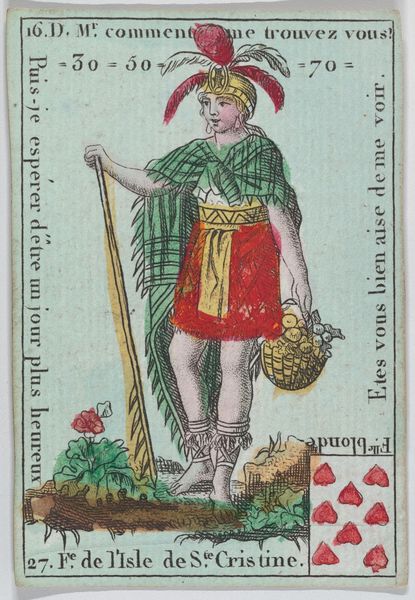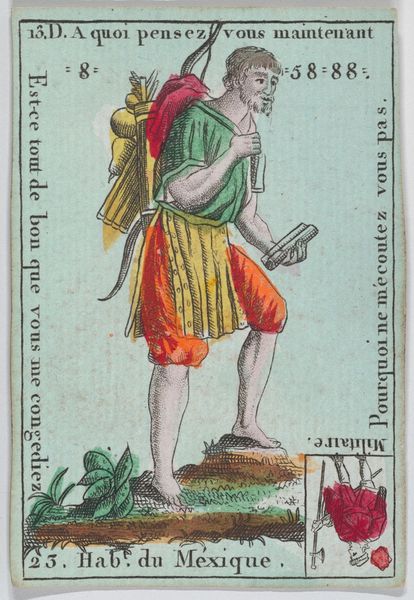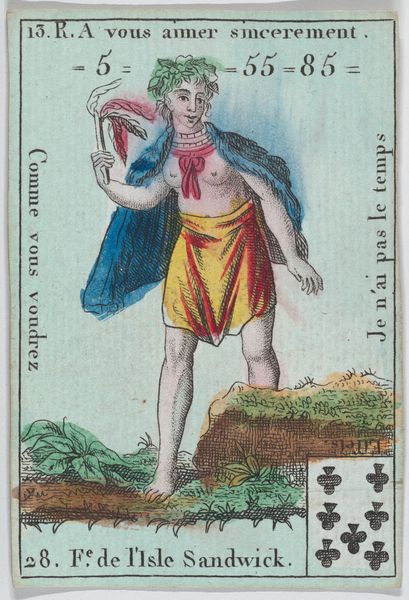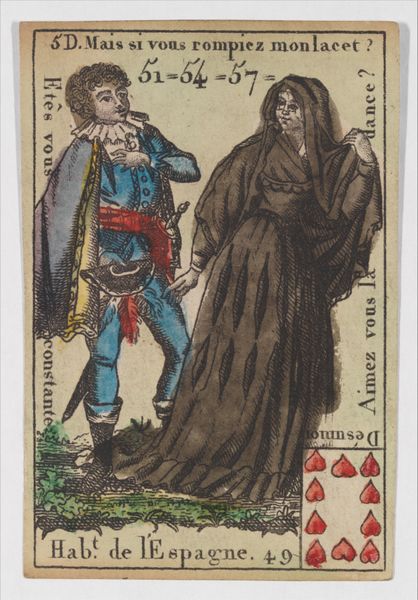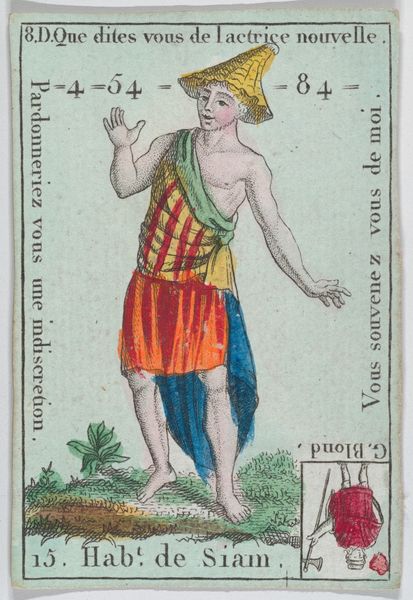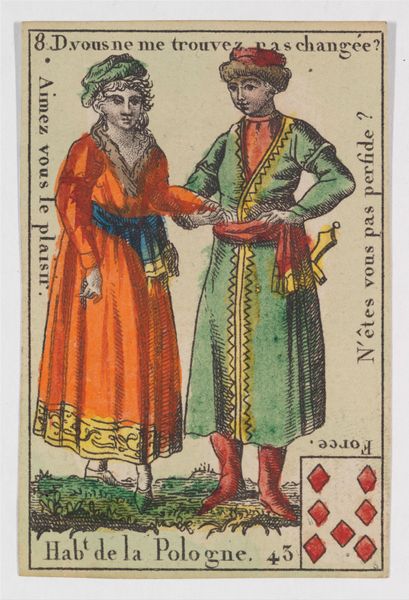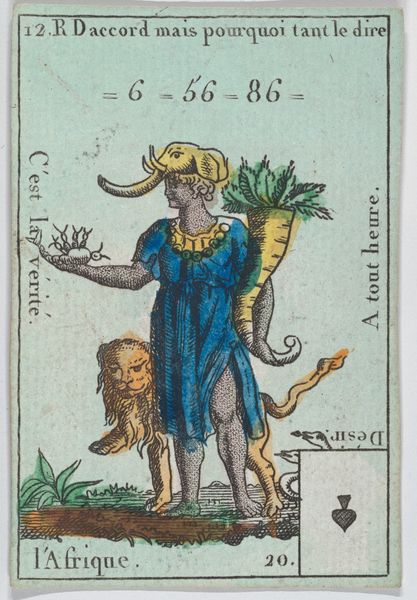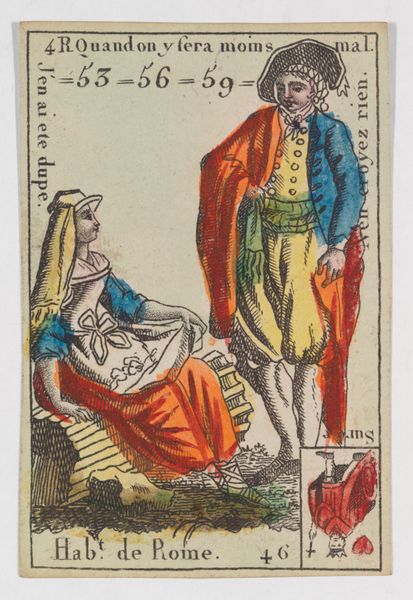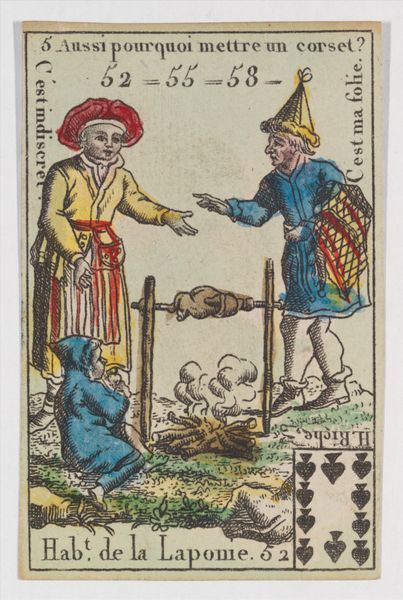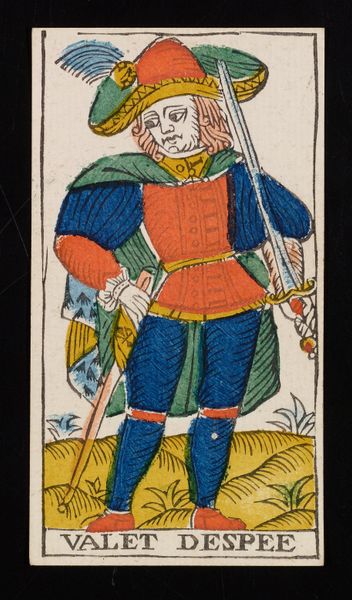
Hab.t de l'Acadie, from the playing cards (for quartets) "Costumes des Peuples Étrangers" 18th century
0:00
0:00
drawing, print, engraving
#
drawing
# print
#
figuration
#
child
#
naive art
#
men
#
costume
#
watercolour illustration
#
history-painting
#
engraving
Dimensions: 3 3/16 × 2 1/16 in. (8.1 × 5.3 cm)
Copyright: Public Domain
Editor: So, this piece is entitled "Hab.t de l'Acadie, from the playing cards (for quartets) 'Costumes des Peuples Étrangers,'" by an anonymous artist, created in the 18th century. It's a print; an engraving to be exact, with some drawing, and resides at the Met. The figures, particularly the woman, feel a bit romanticized and... perhaps not entirely accurate? How should we interpret it? Curator: Precisely. What's most striking is how this image participates in a broader project of representation and categorization. It’s less about accurate depiction and more about constructing an idea of Acadian people – that is, people from what is now Nova Scotia, New Brunswick, and Prince Edward Island in Canada—for a European audience. Think of these playing cards as circulating specific ideas and biases within the French imagination. Editor: Biases? What kind? Curator: Consider the idealised, almost classical, portrayal of the figures. Does that align with how the Acadians might have perceived themselves, or is it projecting a European standard of beauty and civility onto them? Editor: I see what you mean. It's like the artist is trying to make them fit a certain mold, or agenda even, rather than depicting reality. It's also strange seeing what seems like part of a card game including the suit in the bottom corner. So these "costumes" become something you collect, compare, almost "own". Curator: Exactly. It invites the user to see Acadian people, not as individuals with complex histories, but as specimens within a collection, reinforcing colonial power dynamics. It encourages a detached form of viewing and categorising based on perceived exoticism. This card makes the act of viewing almost playful in a sinister way. Editor: That definitely reframes the image for me. It's a lot less innocent, a lot more about power and control than I initially realised. It also reveals how playing cards can reveal as much about the viewers and producers of images as it does the subject matter. Curator: Absolutely, and hopefully inspires us to interrogate the assumptions behind every image we see, especially from a historical perspective.
Comments
No comments
Be the first to comment and join the conversation on the ultimate creative platform.
